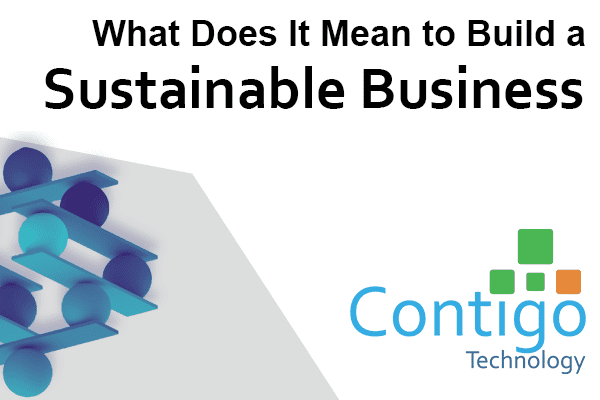
What Does It Mean to Build a Sustainable Business?
Embracing sustainability as one of your core values can make your company more likely to succeed! When becoming a sustainable company, you must think bigger than recycling and utilizing renewable energy. You also have to consider laying the foundations for future customer and employee growth.
The features of a sustainable company include:
- Continuing or repeating processes
- Having the knowledge, time, and skills to adapt to abrupt changes
- The capability to scale up or down whenever is necessary
Everything may fall apart in an organization that doesn’t have repeatable methodologies to support new hires and onboarding. Your processes should also be able to adapt to changes when required to meet any organizational needs. Furthermore, companies should also be capable of growing or reducing resources concerning demand.
As a company manager, you need to prioritize sustainable scaling instead of quick, unsustainable growth. Rapid shifts can address present problems; however, they can later backfire on the organization and hinder its development without persistence.
What fuels a sustainable business?
Don’t fail to pick up on these factors if you want to grow sustainably:
Platform for expansion
All of your business solutions need to link to a central hub and act as a growth platform to enhance efficiency and productivity. Don’t focus on the functionality and features of individual solutions: instead, consider the capabilities and boundaries of the blended solutions!
Updated documentation
Employees can operate more efficiently with a simple yet powerful automated documentation system. With this system, the management and creation of business documents can be completed in good time with greater accuracy. This procedure will allow your workers to revise existing templates within the document generation system, helping them comply with modifying regulations.
Learning management
Integrating your learning management system can aid you with the customization and management of employee training across various teams. This approach can enhance employee engagement and morale. After all, your employees will be more likely to stay and serve your customers better with more excellent knowledge. Therefore it is worth investing in human resources training, especially since it can yield high returns on investment. Just think – stopping even just one phishing attempt could save your organization thousands!
Integration
Solutions that can integrate can consolidate data. This means that they can undoubtedly be an asset to your company in the long run. Despite this, some leaders disregard this, ending in a company’s unsuccessful blend of technologies that aren’t compatible with each other.
Lack of integration may be a problem for your organization in the long term, hindering the business on its sustainable growth pathway.
Industrialization
Automating repetitive manual processes can improve your organization’s efficiency, lower costs, reduce errors, and even boost employee and customer satisfaction. Ensure that your company doesn’t fall behind in a modern age of industrialized systems! Utilizing this approach can help achieve that all-important sustainable growth.
Partner for success
In failing to be a sustainable organization, you risk reducing your employee and customer base. Thus, you need to stop focusing on rapid acceleration and instead turn to solutions that can support your sustainable growth. This approach can aid you with achieving customer and employee satisfaction and success in the long run.
Managed service providers like us can assist you in achieving sustainable scalability with more efficiency. Don’t hesitate to contact us today for a no-obligation consultation to discover how you can create a more sustainable organization!
Learn more here by downloading our “What Is Your Organization’s Current Sustainability Posture Score?” checklist!
